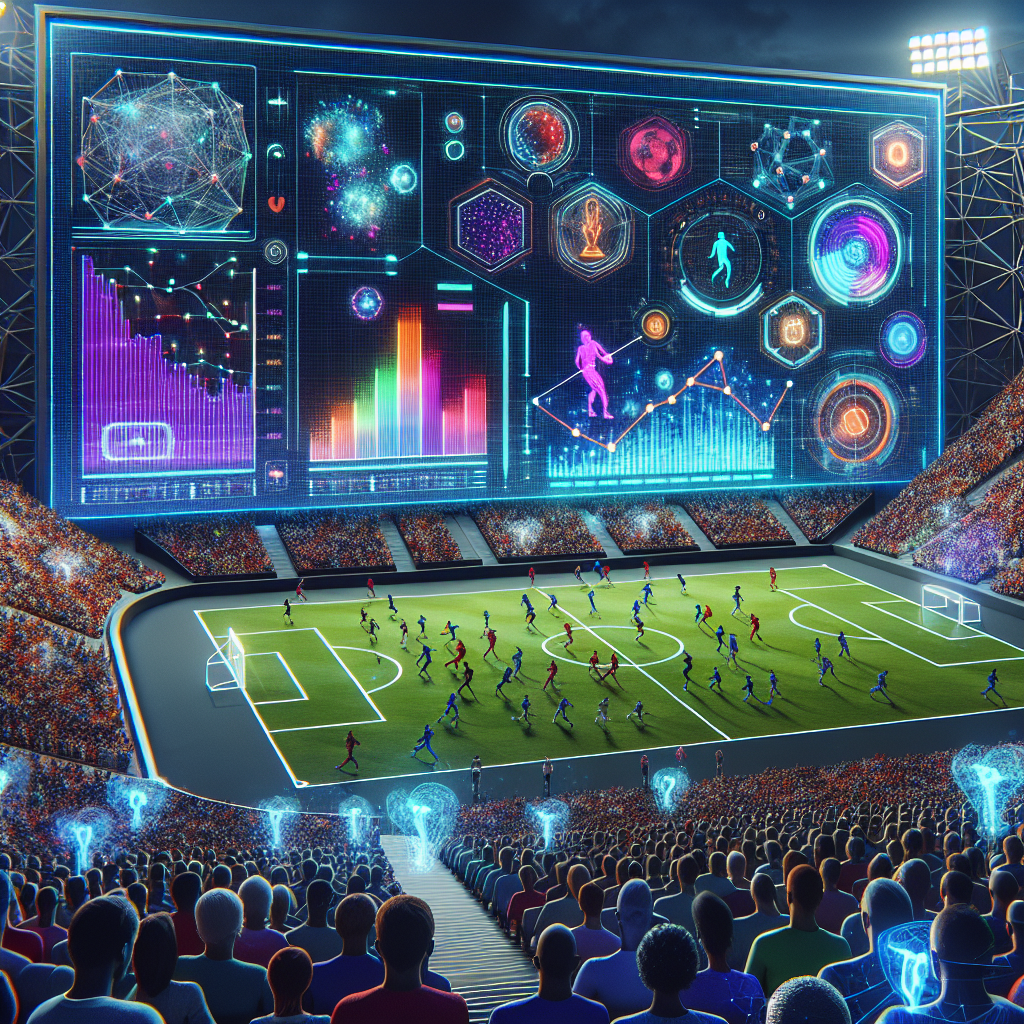Sports have always been a significant part of human culture, bringing people together to witness thrilling competitions and root for their favorite teams. With the advancement of technology, sports analytics have become increasingly important in understanding and analyzing the performance of athletes and teams. One of the most exciting developments in this field is the use of artificial intelligence (AI) for real-time sports event data visualization.
AI-powered data visualization in sports allows teams, coaches, and fans to gain valuable insights into the game as it unfolds. By analyzing and presenting data in real-time, AI can help teams make strategic decisions, improve player performance, and engage fans in a more interactive and immersive way. In this article, we will explore how AI is revolutionizing sports event data visualization and its potential impact on the world of sports.
How Does AI Work in Sports Data Visualization?
AI algorithms are designed to analyze large amounts of data quickly and efficiently. In the context of sports, AI can process data such as player statistics, game footage, and performance metrics to provide real-time insights and visualizations. This can include generating heat maps to show player movements on the field, predicting game outcomes based on historical data, and identifying patterns in player behavior that can lead to improved performance.
One of the key advantages of using AI in sports data visualization is its ability to handle complex and dynamic data in real-time. By continuously analyzing and updating data as the game progresses, AI can provide teams with up-to-the-minute information that can help them make better decisions on the fly. This can be especially useful in fast-paced sports like basketball or soccer, where split-second decisions can make all the difference in the outcome of a game.
AI can also help teams and coaches identify areas for improvement and develop more effective strategies based on data-driven insights. By analyzing player performance metrics and game statistics, AI can pinpoint weaknesses in a team’s defense, highlight areas where a player needs to improve, and suggest tactics that can give a team a competitive edge. This can lead to more efficient training sessions, better player development, and ultimately, more successful performances on the field.
Benefits of Using AI for Real-Time Sports Event Data Visualization
There are several key benefits to using AI for real-time sports event data visualization:
1. Enhanced Decision-Making: By providing teams and coaches with real-time insights and visualizations, AI can help them make more informed and strategic decisions during a game. This can lead to better player performance, improved game tactics, and ultimately, more wins for the team.
2. Improved Player Performance: AI can analyze player data and performance metrics to identify areas for improvement and develop personalized training programs for each player. By focusing on individual strengths and weaknesses, AI can help players reach their full potential and perform at their best on the field.
3. Engaging Fan Experience: AI-powered data visualizations can enhance the fan experience by providing real-time updates, interactive graphics, and insights into the game that were previously unavailable. This can help fans feel more connected to the game and increase their engagement with the sport.
4. Competitive Advantage: Teams that use AI for real-time sports event data visualization can gain a competitive edge over their opponents by having access to more accurate and timely information. This can help them adapt to changing game situations, exploit weaknesses in the opposing team, and ultimately, win more games.
FAQs
Q: How accurate is AI in predicting game outcomes?
A: AI algorithms can analyze historical data and game statistics to predict game outcomes with a high degree of accuracy. However, sports are inherently unpredictable, and there are many factors that can influence the outcome of a game. While AI can provide valuable insights and predictions, it is not foolproof and should be used in conjunction with human expertise and intuition.
Q: How does AI handle real-time data processing during a sports event?
A: AI algorithms are designed to process large amounts of data quickly and efficiently, making them well-suited for real-time data processing during a sports event. By continuously analyzing and updating data as the game unfolds, AI can provide teams with up-to-the-minute insights and visualizations that can help them make better decisions in the moment.
Q: Can AI help improve player performance and prevent injuries?
A: Yes, AI can analyze player performance metrics and identify areas for improvement that can help players reach their full potential. By developing personalized training programs based on individual strengths and weaknesses, AI can help players improve their skills and reduce the risk of injuries on the field.
Q: How can AI enhance the fan experience during a sports event?
A: AI-powered data visualizations can provide fans with real-time updates, interactive graphics, and insights into the game that were previously unavailable. This can help fans feel more connected to the game, increase their engagement with the sport, and enhance their overall viewing experience.
In conclusion, AI is revolutionizing sports event data visualization by providing teams, coaches, and fans with valuable insights and real-time information that can help them make better decisions, improve player performance, and enhance the overall fan experience. By leveraging the power of AI, sports organizations can gain a competitive edge, engage fans in new and exciting ways, and ultimately, take the world of sports to new heights of innovation and success.

